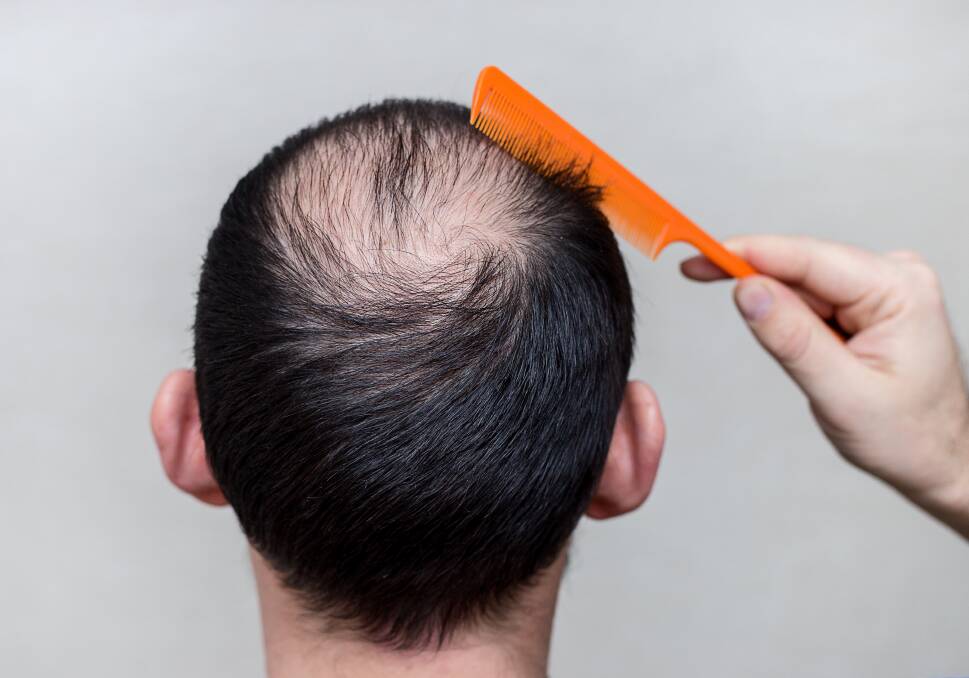I’m worried my hair is thinning. When should I see a specialist?
There are different types of hair loss. The most common type is androgenetic alopecia, which affects both men and women, but is usually more common in men.
Actually, by the age of 50 about half of men have it, and 80 per cent by the age of 80.
It is less common in women, but still affects about 30 to 40 per cent by the time they reach menopause.
We know there is a strong genetic basis for male pattern hair loss (androgenetic alopecia in men). The process is driven by a hormone called dihydrotestosterone, which leads to miniaturisation. In simple terms, this refers to shrinking of the hair fibres.
Men – or their partners – tend to first see progressive recession of their hairline, then balding in the crown along with a general loss of volume of their hair.
Eventually, if the hair loss progresses, the receding hairline meets the bald spot on the crown. Depending on your genetics, this process can take up to a few years.
Female pattern hair loss (androgenetic alopecia in women) presents differently.
Women may notice an increase in hair shedding, for example while washing or brushing their hair. Some women even describe clumps of hair in the sink.
Women with female pattern hair loss experience a general reduction in hair volume and size of their ponytail.
Both men and women with androgenetic alopecia complain that their hair is more see-through, i.e., they can see light reflecting on their scalp.
Male or female pattern hair loss is a slow process which happens in stages over many years, so you might not notice it at first.
In the first stage, a specialist might be able to diagnose it by closely examining the scalp.
Later, while you become aware of it, people around you may not yet detect the subtle changes that you can. This is the best time to seek help.
Everyone feels differently about hair loss. Some men adapt or are happy to shave their heads. Others are even inspired by bald celebrities like Jason Statham. Unfortunately, many men suffer in silence.
Women are generally better at identifying hair loss and seeking help, and people may assume men do not care about their hair loss. I have met many who do.
Hair loss can affect self-esteem and someone’s perception of themselves. The earlier we can start to treat it, the better.

People may assume men do not care about their hair loss, but unfortunately, many men suffer from self-confidence issues around their balding appearance. Picture: Shuttertsock.
Hair loss can be prevented
Androgenetic hair loss can be very distressing, but the process can be can stopped with certain medications.
Finasteride and dutasteride are medications which block the production of dihydrotestosterone, the hormone that causes male pattern hair loss.
These treatments can arrest hair loss in 90 per cent of men and also stimulate regrowth in 40 per cent.
On the other hand, female pattern hair loss can be treated with different anti-androgen (hormone blocking) medications like spironolactone, flutamide or bicalutamide. In both men and women, we can stimulate hair growth using minoxidil, which is available as a tablet or compounded capsule, or even as a topical preparation.
Other techniques include low-level laser light therapy, which you may have heard referred to as a laser comb.
Another treatment available for androgenetic alopecia is platelet-rich plasma, which uses growth factors to promote hair growth.
If these treatments are not suitable, we can consider hair transplantation, which has been refined in recent years.
There are now two popular techniques (FUT and FUE) and, if done properly, the vast majority of hairs should grow. To see the results that can be achieved, head to Instagram at @DrBevinBhoyrul.
If you are experiencing hair loss, there are many options available. We encourage you to visit a specialist and start the process of restoring your luscious locks.
- Today’s answer is provided by Sinclair Dermatology and hair loss physician Dr Bevin Bhoyrul, through HealthShare, a digital company dedicated to improving the health of regional Australians. Submit questions, and find more answers, at healthshare.com.au.
